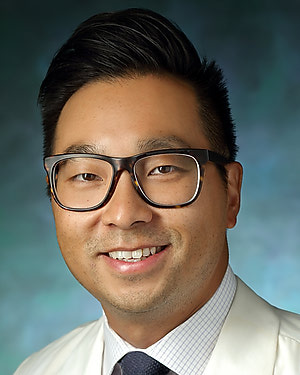Facial Trauma
Featured Experts:
Whether from a motor vehicle accident, assault or other incident, facial trauma can cause pain, loss of function, and a disfigured appearance. Johns Hopkins’ plastic and reconstructive surgeons Richard Redett, M.D., and Robin Yang, D.D.S., M.D., discuss the impact of facial fractures, soft tissue injuries and other aspects of facial trauma, and how plastic and reconstructive surgery can restore function and form.
What You Need to Know
- Facial injuries are most commonly caused by motor vehicle accidents and assault.
- Facial trauma can involve facial bleeding, swelling, bruising, lacerations, cuts, burns and deformity.
- Computed tomography (CT) is the main imaging method used to assess a person with facial trauma, since it allows doctors to visualize bone and soft tissues.
- Larger or more complex injuries may require facial reconstruction surgery.
- Facial reconstruction in children must allow for continued growth and development of the facial features and skull.
What is facial trauma?
Facial trauma is bone or soft tissue damage to the face caused by motor vehicle accidents, assaults (including gunshots), sports injuries, falls, chemical exposures, thermal burns or animal bites. Because the human face is an intricate area containing many bones, blood vessels, nerves, muscles and sensory organs, if untreated, facial trauma may cause a permanent loss of function (seeing, chewing, speaking, swallowing) and disfigurement if not treated. Working together, emergency doctors, plastic and reconstructive surgeons, and other practitioners can lessen this risk of permanent complications.
Traumatic Injuries to the Face
Depending on the type of injury, facial trauma can cause severe bleeding and swelling, a bruised face, and distorted appearance of the facial features.
Facial Fractures
Facial fractures can affect any part of the face and impair function or distort the appearance. Severe fractures of the facial bones can cause leakage of cerebrospinal fluid that surrounds the brain.
- A broken jaw can affect the person’s ability to eat, chew, speak and swallow.
- Teeth can be cracked or broken calling for restorative dental work.
- Broken bones in the midface (maxillary fracture ― upper) can include:
- LeFort I fracture, which occurs in a horizontal (transverse) line above the teeth and beneath the nose (the alveolar ridge).
- LeFort II fracture, which can affect one or both sides of the face. The crack in the facial bones extends from the lower edge of the eye socket across the bridge of the nose and downward through the cheekbone (zygomatic arch) into the upper jaw (maxilla) behind the back upper teeth.
- A LeFort III fracture forms a horizontal line across the back of the eye sockets and may be the result of a forceful, downward blow to the head.
- A broken eye socket (orbital bone fracture) may include:
- orbital rim fracture, which occurs in the thick outer edges of the eye socket bone
- orbital floor fracture, sometimes called a blowout fracture. A direct impact to the face (for instance, being hit in the face with a baseball) can leave the outer rim of the eye socket intact, but can break the bone in the bottom of the eye socket, creating a hole. Orbital floor fractures can cause a black eye, eye pain and vision problems due to entrapped nerves and muscles that enable movement of the eye.
Facial Soft Tissue Injuries
These may include
- Torn skin or scalp (facial laceration) that raises the risk of bleeding, infection and scarring.
- Cuts and scrapes to the face.
- Facial burns, either thermal (from heat or cold) or chemical.
- Eye injuries.
- Nerve damage that can affect sensation or a person’s ability to smile, blink, move their eyes to focus, swallow, bite, or chew.
- Laceration of the tongue, which can impair the person’s ability to eat, swallow or speak.
- Damage to salivary glands. Over 100 of these glands are found in the face and keep the mouth moist for eating and speaking.
The first stage of treatment for a person with a facial injury due to a motor vehicle accident, fall, burn, animal bite or assault takes place in the emergency department. There, the patient gets a full, head-to-toe trauma evaluation and emergency management of any life-threatening conditions.
Doctors, nurses and technologists work together to control bleeding and swelling and assess and manage effects of the facial trauma on the person’s airway, brain and vision. Facial injuries can be associated with:
- Airway damage: A broken nose or other fractures and swelling can injure the nasal passageways and make it difficult for a person to breathe.
- Neurological problems: Facial injuries can be associated with head trauma that can have an impact on the skull and brain. ER doctors look for uneven pupils, leaks of clear cerebrospinal fluid from the nose and other signs that the injury involves the central nervous system.
- Eye injuries: The eye itself and its surrounding nerves and bones can be damaged.
- Internal bleeding can cause increasing pressure in the skull, putting the eyes, brain, nerves or other sensitive structures at risk for further injury.
Diagnosing Facial Injuries
After careful physical examination in the emergency room, imaging tests using computed tomography, or CT, is the most effective way to assess face trauma, since it allows imaging of bone, soft tissue, blood vessels and other structures.
Plastic and reconstructive surgeons may order additional images to plan for surgery. Redett explains, “CT is the only thing we use. Plain X-rays don't tell the whole story, and MRI doesn't image bones well.”
Repairing Traumatic Facial Injuries
For deep cuts or lacerations to soft tissue, abrasions or fractures of the bones of the face, the ER doctors will likely refer the patient to a plastic and reconstructive surgeon.
Communication Is Essential
The surgeons stress the importance of clear communication between patients and the plastic and reconstructive surgeons. Practitioners need to be receptive to the patients’ priorities, hopes and concerns, and patients should understand the surgical options available, the treatment plan and the outcomes they can expect.
Patients often have questions about the technical aspects of surgery,” Redett says. “For instance, when we have to repair bone fractures with plates and screws, patients will ask if it will remain in their face.” (It will, he says, adding that the materials are compatible with the patient’s tissues.) “They wonder if titanium plates or screws will set off metal detectors.” (They won’t.)
Goals of Facial Trauma Treatment
The objectives of treating someone with facial trauma using plastic and reconstructive surgery are:
- Restore normal facial functions affected by the facial trauma, such as focusing, blinking, smiling, chewing, speaking and swallowing.
- Optimize appearance.
Yang explains his first priority is restoring function: the patient’s ability to see, breathe, chew, swallow, speak and move facial features. But he adds that surgery to ensure the facial features work properly can take the patient’s appearance into account.
“Our decision-making process, as plastic and reconstructive surgeons, focuses on how can we gain the best functional outcome while considering what the treated area is going to look like afterward. For instance, if we are repairing a major lower jaw fracture, we don't want to scar the skin, so we may go through the mouth.”
Yang says plastic and reconstructive surgeons, when planning treatment for facial trauma, draw from their experience with other types of facial plastic and reconstructive surgery.
“We can use our understanding of normal healing and that's why we use both physical exam and CT. Our experience with repairing congenital facial deformity and cancers affecting the face help us understand the recovery process,” he says, adding that surgical planning usually starts with soft tissues and then considers whether broken facial bones are likely to heal on their own or require surgical reconstruction.
Repairing Soft Tissue Injuries to the Face
Treatment for tears or crush injuries to the skin, nerves, glands or muscles may include microvascular reconstructive surgery — one or more intricate procedures to repair areas of soft tissue that have been cut or torn while reestablishing nerve connections and blood flow.
Addressing Facial Trauma Affecting the Eyes
Facial injuries can involve peripheral nerves such as the cranial nerves that allow movement and sensation of the eyes.
“We need to document any neurologic problems early,” Yang says. “In patients with an injury to the upper third of their face and who are having difficulty moving eyes or eyelids, this could be due to blood collection behind eye, which can eventually cause blindness. We need to make sure we catch those issues early to preserve eyesight.”
Repair and Reconstruction of Facial Bones
Surgical treatment of facial fractures may include:
- Resetting of broken bones manually, without surgery (closed reduction).
- Surgery to align broken bones in the face (open reduction).
- Wiring of a broken jaw to stabilize it as bone heals. This can call for a special liquid diet while the person is unable to chew.
- Bone or skin grafts.
- Repair of eye socket or midfacial bones with titanium hardware.
Working with Other Specialties
The plastic and reconstructive surgery team may collaborate on your care with colleagues in other specialties to ensure your optimal treatment and recovery from facial trauma.
- Experts in ophthalmology are essential when the patient’s injuries involve the eye, and can follow up with monitoring to gauge the patient’s vision and eye movement throughout healing.
- Consulting with neurosurgery may help plan reconstruction, grafting and nerve transfers that can restore movement and sensation to the face.
- Dental experts can provide splints, braces or dentures to repair palate injuries or realign the patient’s bite and follow up with repairs for broken teeth or implants to replace lost teeth.
- Speech pathologists can help retrain patients who have had injuries to the jaw, tongue or mouth that affect speech.
- Mental health practitioners may be part of a patient’s team to address post-traumatic stress disorder, anxiety or depression related to the injury or its treatment, especially those related to burns. Redett notes this can be a long-term process of interacting with the patient and family, particularly if the patient is a child. “Support for the patient’s mental well-being is a vital part of healing from facial trauma,” he says.
Pediatric Facial Trauma Patients
Fortunately, facial trauma in children is relatively rare. When it comes to treating kids’ traumatic facial injuries, Yang and Redett agree that reconstruction and recovery can be complex and necessitate long-term monitoring.
“In a growing child, the bones, teeth and facial shape are still developing,” explains Yang. “Trauma to certain areas may have an impact ― including bones that may not grow as much as they could normally. Skull deformity can cause issues later on.
“We have to counsel patients and their caregivers to help them understand monitoring as the child grows. We may follow kids’ progress for months or even years to make sure any areas affected by trauma are healing properly.”







